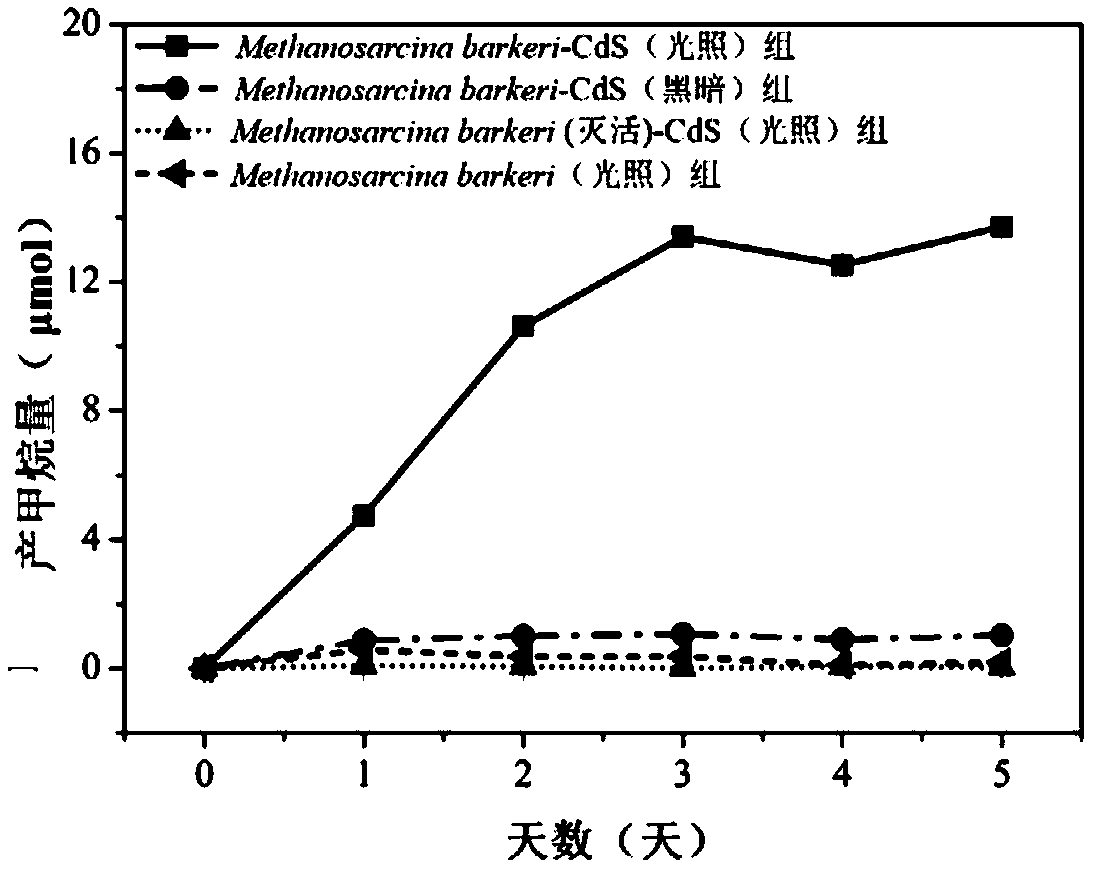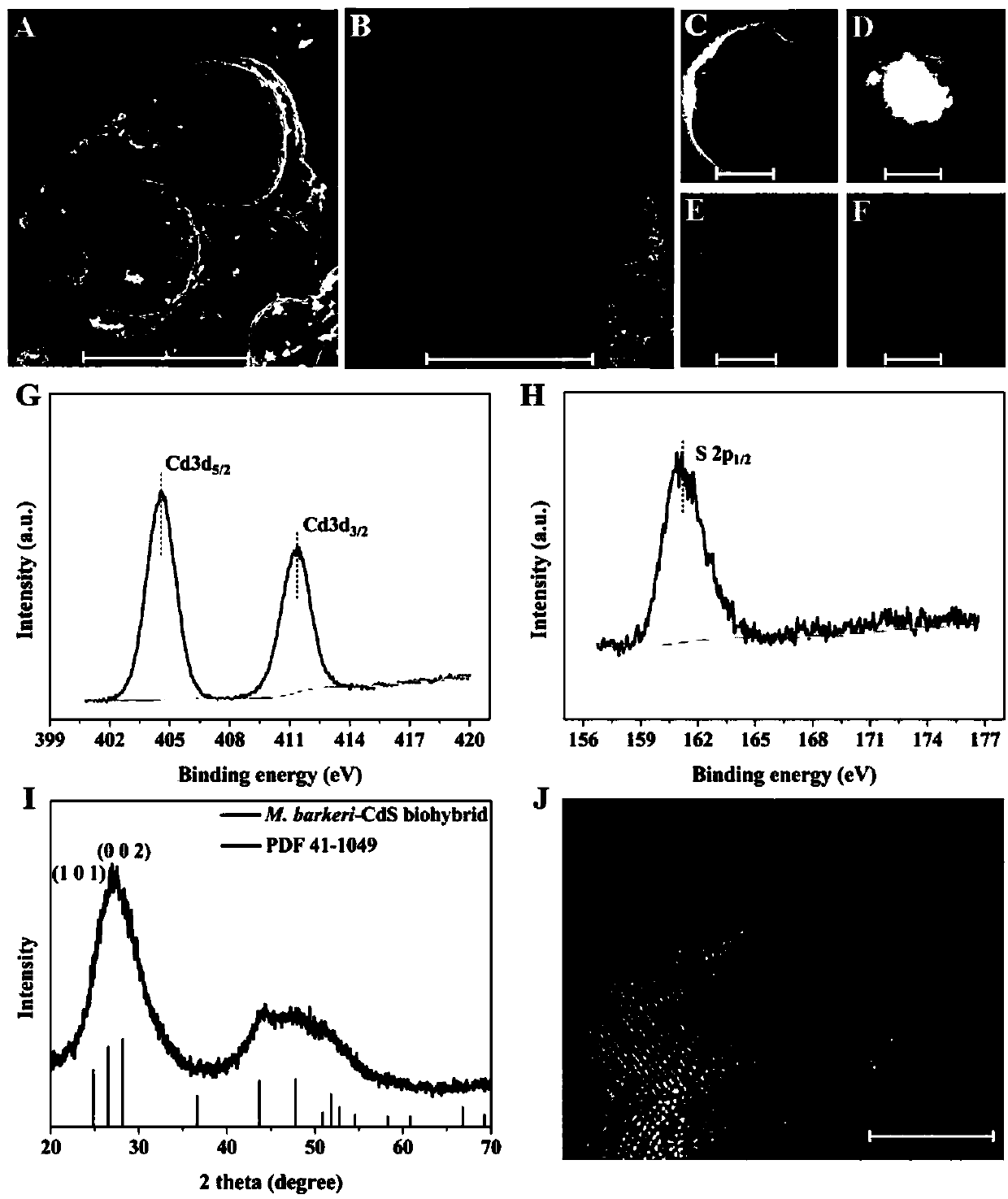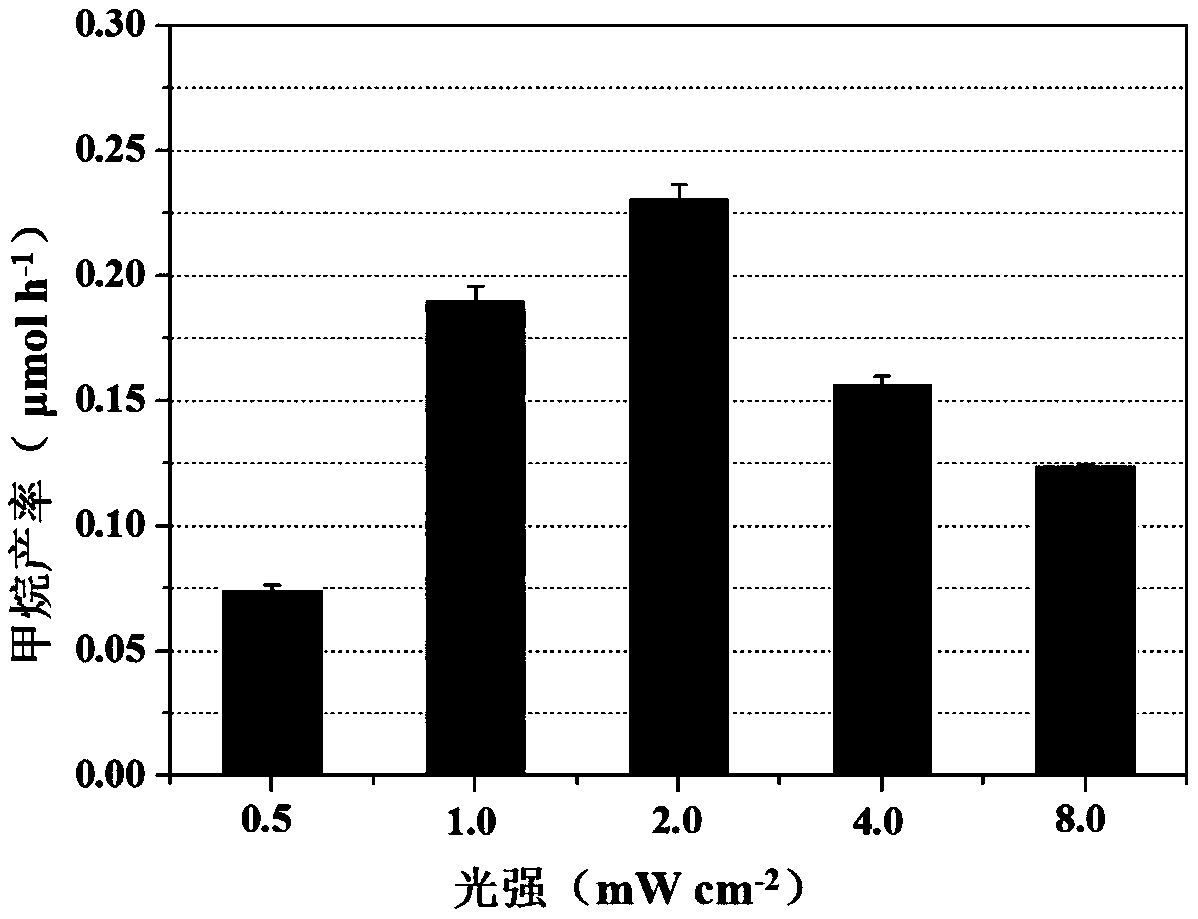Method for reducing carbon dioxide to produce methane by optically driving methane octococcus
A methanosarcina and methanogenic technology, applied in the direction of microorganism-based methods, biochemical equipment and methods, microorganisms, etc., can solve the problems of complex process, poor product selectivity, high energy consumption, etc., achieve simple process, reduce process The effect of low cost and energy consumption
- Summary
- Abstract
- Description
- Claims
- Application Information
AI Technical Summary
Problems solved by technology
Method used
Image
Examples
Embodiment 1
[0045] (1) Methanosarcina barkeri was inoculated into an acetic acid medium with a pH of 6.87 at a volume ratio of 20%, the medium was adjusted, and the culture was maintained at a constant temperature of 37°C;
[0046] (2) When the OD of Methanosarcina barkeri in step 1 600nm When the value is 0.25, under the condition of 120r / min, add substance (CdCl 2 ) to synthesize CdS in the bacterial liquid (the acetic acid medium contains S 2- ), make its final concentration be 1mmol / L, obtain Methanosarcina barkeri-CdS hybrid system;
[0047] (3) The Methanosarcina barkeri-CdS hybrid system was centrifuged at 5000 r / min for 10 min, the precipitate was transferred to a carbon-free medium, and cysteine was added to make the final concentration 0.15wt%, and cultured in The top of the base is fed with CO 2 ;
[0048] (4) Under the constant temperature of 37 ℃, use LED purple light (1.0mW / cm 2 ) to illuminate the hybrid system of step 3 with CO 2 Reductive methane production.
[0...
Embodiment 2
[0053] (1) Methanosarcina barkeri was inoculated into an acetic acid medium with a pH of 6.87 at a volume ratio of 20%, the medium was adjusted, and the culture was maintained at a constant temperature of 37°C;
[0054] (2) When the OD of Methanosarcina barkeri in step 1 600nm When the value is 0.25, under the condition of 120r / min, add substances to synthesize CdS in the bacterial liquid, so that the final concentration is 1mmol / L, and construct the Methanosarcina barkeri-CdS hybrid system;
[0055] (3) The Methanosarcina barkeri-CdS hybrid system was centrifuged at 5000 r / min for 10 min, transferred to a carbon-free medium, and the sacrificial reagent cysteine was added to make the final concentration 0.15wt%, and cultured in The top of the base is fed with CO 2 ;
[0056] (4) Under the constant temperature of 37 °C, using different light intensities of 0.5, 1.0, 2.0, 4.0, 8.0 mW / cm 2 , the hybrid system of step 3 was subjected to light CO 2 Reductive methane productio...
Embodiment 3
[0059] (1) Methanosarcina barkeri was inoculated into an acetic acid medium with a pH of 6.87 at a volume ratio of 20%, the medium was adjusted, and the culture was maintained at a constant temperature of 37°C;
[0060] (2) When the OD of Methanosarcina barkeri in step 1 600nm When the value is 0.25, under the condition of 120r / min, add substances to synthesize CdS in the bacterial liquid, so that the final concentration is 1mmol / L, and construct the Methanosarcina barkeri-CdS hybrid system;
[0061] (3) The Methanosarcina barkeri-CdS hybrid system was centrifuged at 5000r / min for 10min, transferred to a carbon-free medium, and the sacrificial reagent cysteine was added to make the final concentrations of 0.05, 0.1, 0.15, 0.2wt%, and pass CO on the top of the medium 2 ;
[0062] (4) Under the constant temperature of 37 ℃, use LED purple light (1.0mW / cm 2 ) to illuminate the hybrid system of step 3 with CO 2 Reductive methane production.
[0063] The results show that th...
PUM
| Property | Measurement | Unit |
|---|---|---|
| Diameter | aaaaa | aaaaa |
Abstract
Description
Claims
Application Information
 Login to View More
Login to View More - R&D Engineer
- R&D Manager
- IP Professional
- Industry Leading Data Capabilities
- Powerful AI technology
- Patent DNA Extraction
Browse by: Latest US Patents, China's latest patents, Technical Efficacy Thesaurus, Application Domain, Technology Topic, Popular Technical Reports.
© 2024 PatSnap. All rights reserved.Legal|Privacy policy|Modern Slavery Act Transparency Statement|Sitemap|About US| Contact US: help@patsnap.com










